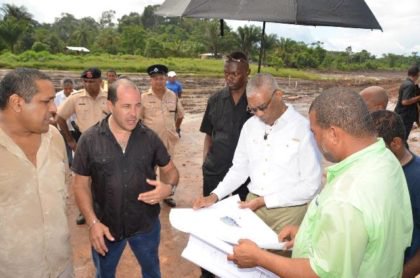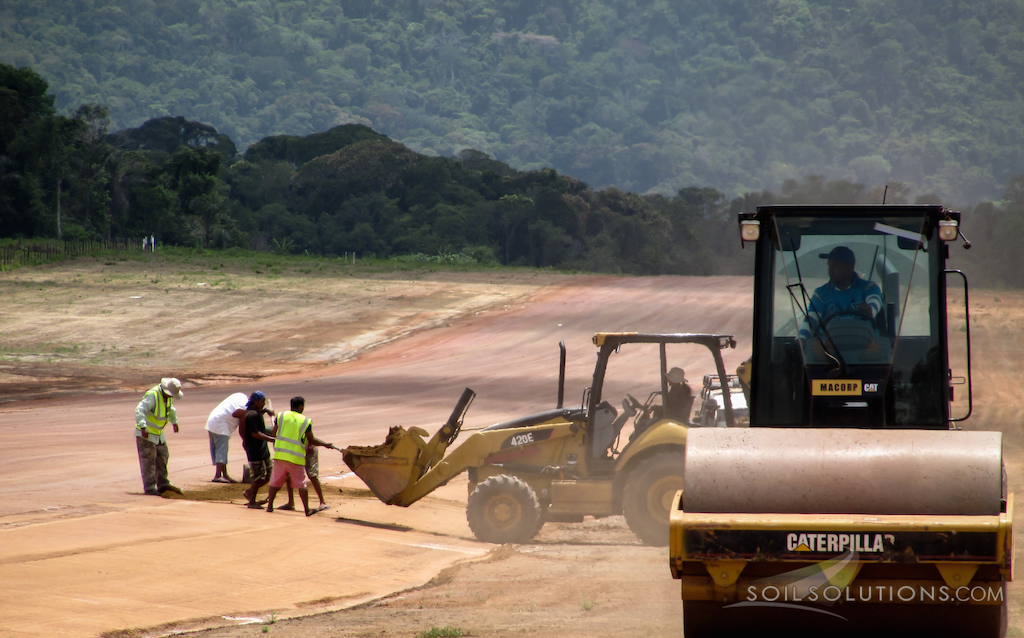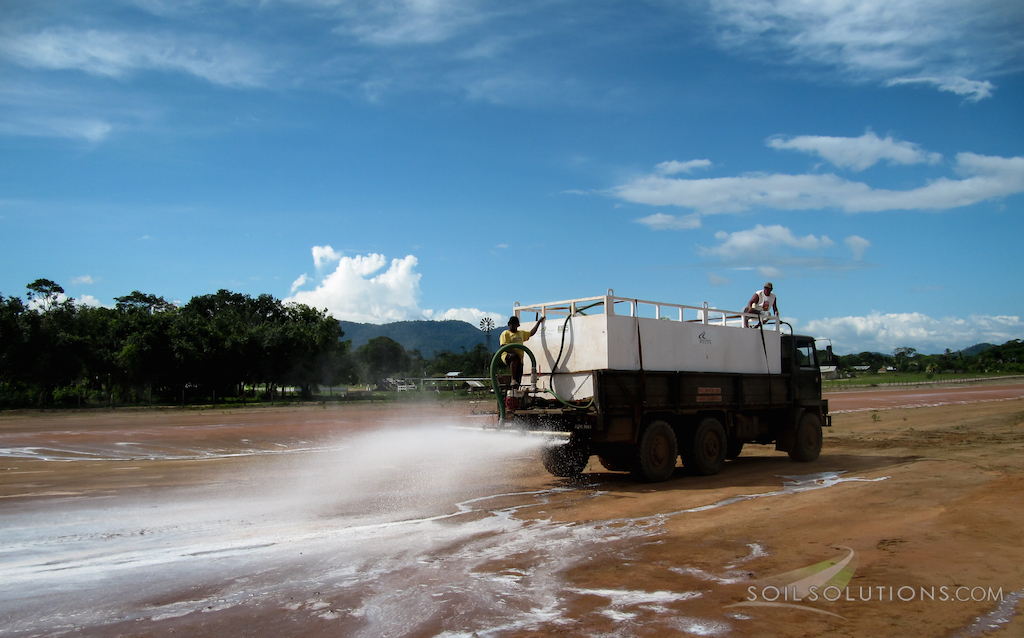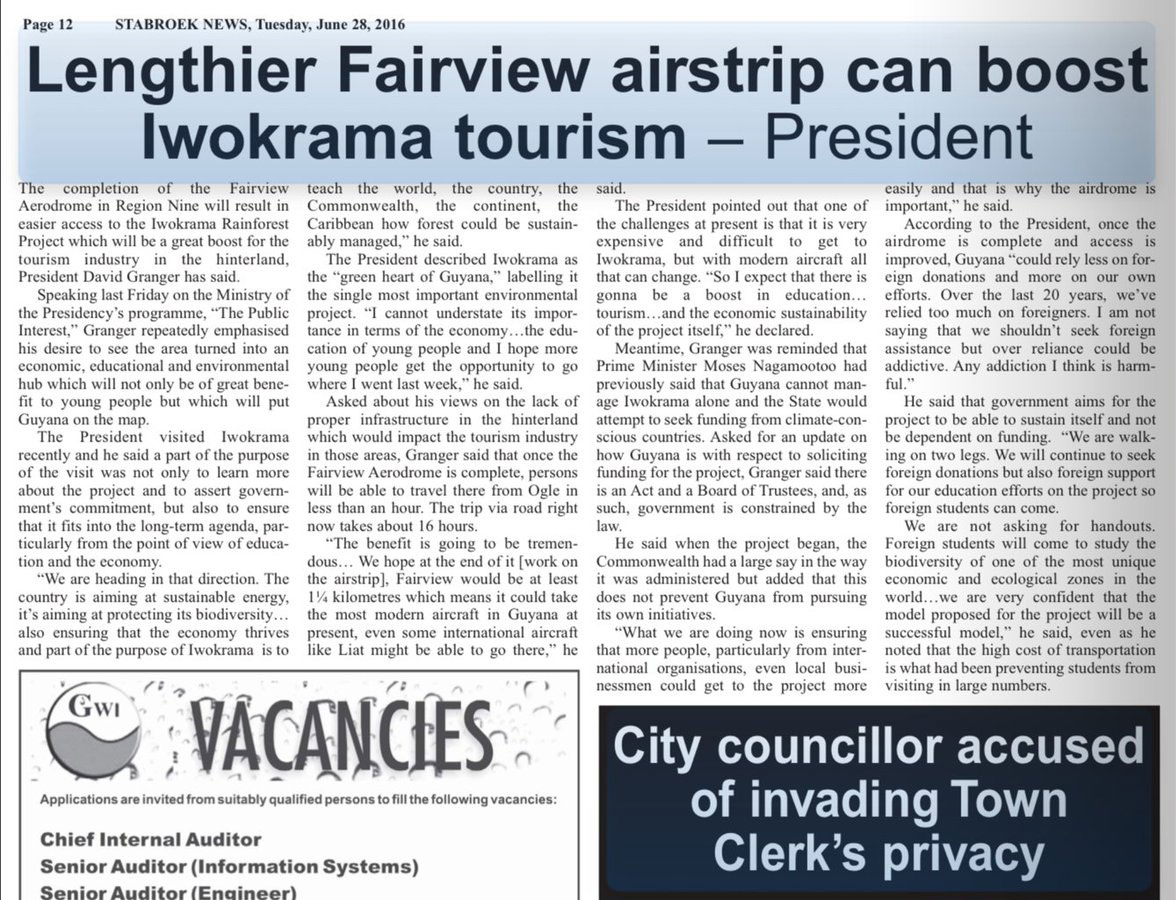Eco-tourism – Guyana Case Study
For many countries, Eco-Tourism has become an important sector that can have a positive economic impact and help to further develop the economy. If managed properly, eco-tourism can be a powerful economic and social tool. Eco-tourism is a sensitive industry and it is important to achieve a managed balance between development and the financial benefits.
Sustainable tourism development requires strong political leadership to ensure wide participation of all involved parts. According to the United Nations Environment Programme, the three main benefits that eco-tourism brings to the local communities are: enhancing economic opportunity; protecting natural and cultural heritage; and advancing the quality of life for all concerned.
Eco-tourism has the potential to increase economic and financial well being by creating jobs for local residents that provide increased income and living standards.
Sustainable tourism activities can be planned to fund specific local projects, such as building a new health clinic or funding an ongoing school program. Thereby allowing the tourist to contribute to a viable project and making a difference. In addition, local governments benefit through tax revenues generated by visitors, which in turn fund local activities related to the management of the protected area.
The better managed a protected area is, the more tourists it will attract. Last but not leas, tourism has the potential to be a major funding source for preservation and conservation, and can help overcome the challenge of inconsistent donor funding.
However, in order to build the tourism industry, it is necessary to create the essential infrastructure. An example is Guyana, a small country on South America’s North Atlantic Coast, known for its border on the – dense tropical Amazon rainforest, , until recently it attracted only an estimated 2,500 leisure visitors annually. That’s about the number that descends on Peru’s Machu Picchu in a single day- this was due to a lack of the infrastructure that made accessibility to the area a challenge.

President Granger at the fairview runway upgrade project
For example, the trip via road to Iwokrama from Ogle takes on average about 16 hours, is very expensive and difficult. With the completion of the Fairview Airstrip, tourists are now able to travel to the same location in less than an hour. President Granger has also repeatedly emphasized that improvement in infrastructure will allow the area to become an important economic, educational and environmental hub that not only be of great benefit to young people but also, it will put Guyana on the eco-tourism map.

Guyana Gravel Airstrip Upgrade – Dust Control – Soil Stabilization
The Surama and Fairview airstrips have already provided the foundation for a growing eco-tourism market.To date Guyana has upgraded two of the gravel airstrips Surama and Fairview, and has provided training to the local villagers to maintain the airstrip creating both a sense of pride as well as employment. This was made possible due to the sustainable manner in which the airstrip was constructed. A environmentally friendly yet high performing stabilizer and surface seal was used in the process. The application of the EBS Surface Seal seals and protects the surface from erosion; loss of fines, cracking and most importantly eliminates dust allowing for increased safety, visibility and a significant reduction in required maintenance of the airstrip. In addition the upgraded airstrip allows for larger aircraft to land, as well as the ability to land year round due to improved aircraft acceleration and increased skid resistance.

The demand in the global eco-tourism market increases each year; as tourists are searching for unexplored places different from usual beach holidays. The environmentally friendly upgrade of the Fairview and Surama airstrips completed in conjunction with JR Ranch and Soil Solutions has allowed Guyana to start benefiting from this sector through the infrastructure development that now provides tourists with an opportunity to explore this amazingly untouched eco-tourist part of Guyana within the Amazon forest.
Please visit the pages listed below – Each of the pages include a project description, project report and project video.





very nice article thanks